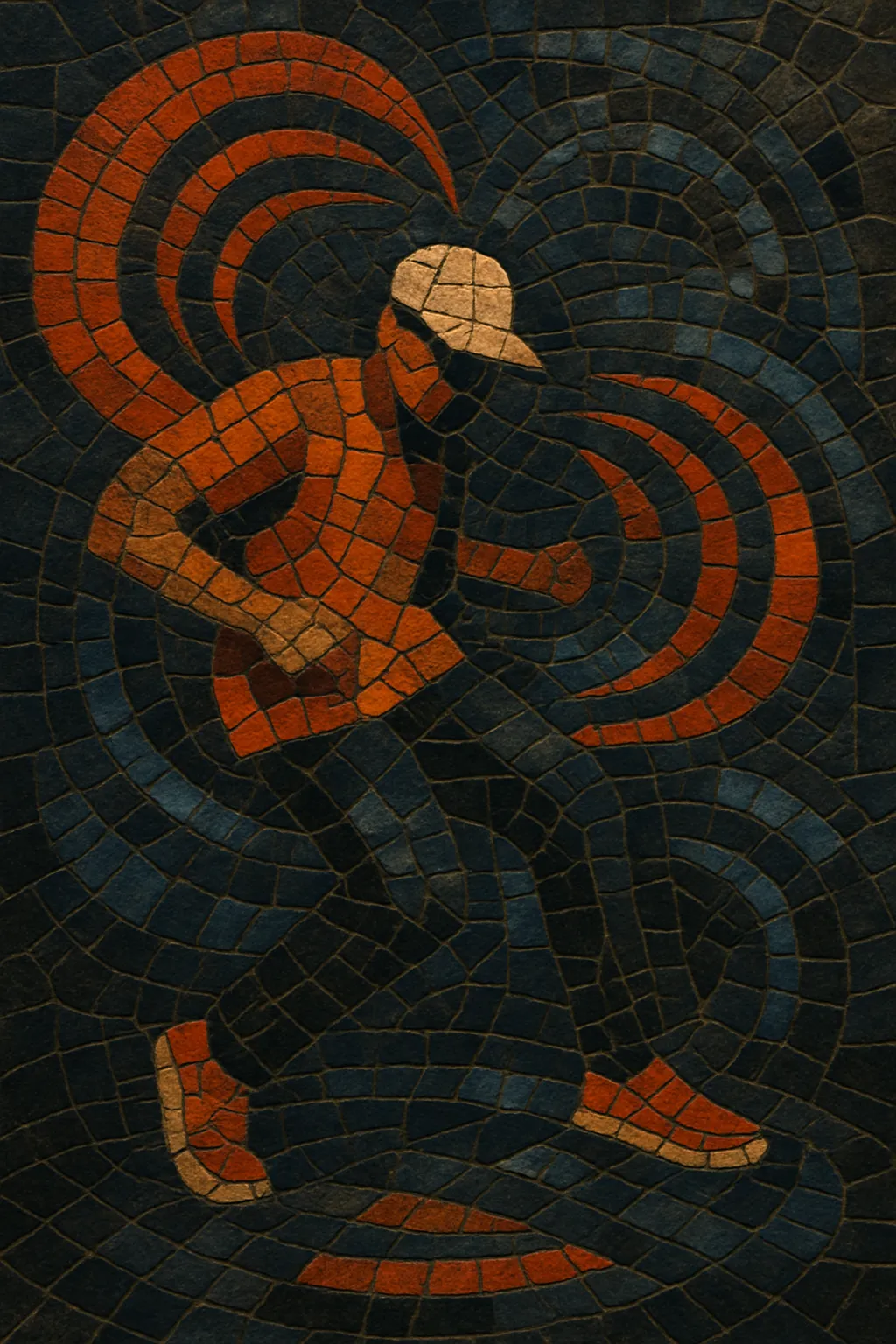Juke is a fast, sample-driven club style from Chicago that runs around 150–160 BPM, built on jagged 808/909 drum programming, booming sub‑bass, and looped vocal chants. It keeps the raw, minimal, party‑starting energy of ghetto house but pushes the tempo and rhythmic syncopation much further.
Tracks often rely on short, repetitive hooks and call‑and‑response phrases, claps on the backbeat, and tom/snare rolls that stutter and pivot around a steady 4/4 grid. Harmonic content is sparse—brief chord stabs, simple bass riffs, and plenty of negative space—so that dancers can lock into the drums. Juke is closely related to, and historically precedes, Chicago footwork; where juke is the more club‑aligned, chant‑heavy form, footwork became more abstract and battle‑oriented.
Juke grew in Chicago’s South and West Side club scene in the late 1990s as a faster, harder mutation of ghetto house. DJs and producers on labels like Dance Mania ramped up the tempo, emphasized booming 808 kicks and clattering claps, and chopped raunchy vocal snippets into tight, looped mantras. Early figures such as DJ Deeon, DJ Milton, DJ Gant‑Man, Traxman, DJ Clent, and RP Boo helped codify the drum vocabulary and the chant‑centric arrangement style.
By the 2000s, “juke” was a common local term for this 160‑ish BPM, chant‑heavy club sound. Parties, radio mixes, and mixtapes circulated across Chicago, with dancers responding to the sharper syncopation and tom/snare flurries. The music stayed largely regional, but its vocabulary—booming subs, rapid fills, minimal hooks—was firmly in place.
International awareness spiked when compilations and features (notably Planet Mu’s Bangs & Works series) showcased Chicago’s juke/footwork continuum. Artists like DJ Rashad, DJ Spinn, Traxman, DJ Roc, and DJ Nate brought the 160 BPM aesthetic to global club and festival stages. While footwork evolved as a more abstract, battle‑driven branch, both styles share core DNA in tempo, drum programming, and vocal micro‑loops.
Juke’s tools and tempo became part of the wider bass‑music vocabulary, influencing producers outside Chicago and inspiring hybrids, including jungle/footwork fusions. Within Chicago, the sound remains a living culture tied to dance, DJ performance, and the city’s DIY club infrastructure.


